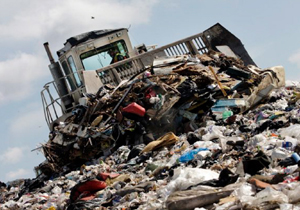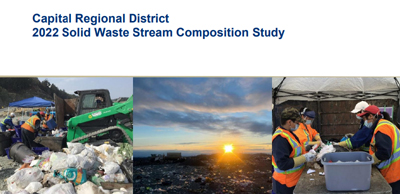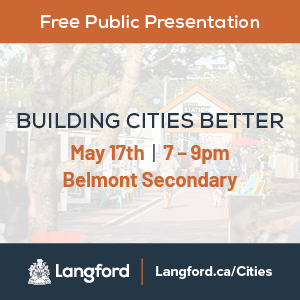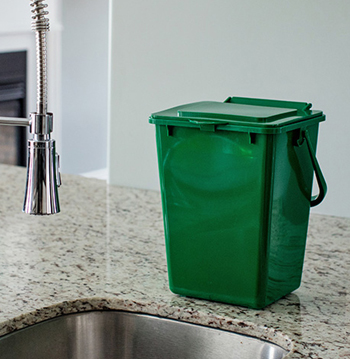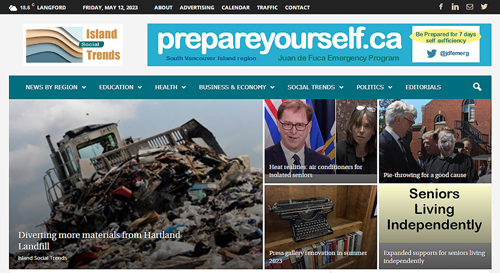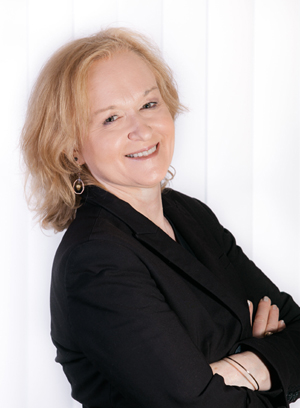Friday May 12, 2023 | LANGFORD, BC [Updated May 16, 2023]
by Mary P Brooke | Island Social Trends
The Capital Regional District (CRD) Board has approved moving forward with policy changes that will see more waste diverted from their Hartland Landfill beginning January 1, 2024.
“The proposed material stream diversion initiatives have the potential to divert up to 40,500 tonnes of waste per year,” said CRD Board Chair Colin Plant.
“This is an incredible step forward to help achieve our 2023-2026 Board Priority of maximizing solid waste diversion as well as help achieve the Solid Waste Management Plan goals to reduce the region’s waste by more than one-third and extend the life of Hartland Landfill to 2100 and beyond,” says Plant
Extending 50 years:
The CRD’s 2021 Solid Waste Management Plan waste disposal target of 250kg/capita by 2031 represents a one-third reduction from current levels, toward the further aspiration to achieve a disposal rate of 125 kg/person/year, as explored in the 2022 CRD Waste Composition Study.
The broader goal is to extend the life of Hartland Landfill to 2100 (50 more years beyond the previous plan which had 2050 as the capacity limit date).
Collection and hauling impacts:
CRD says the highlights of the upcoming policy changes include:
- Banning wood (clean, treated and salvageable), carpet, and asphalt shingles from being landfilled as they have stable reuse, recycling and recovery markets. Residents and businesses would be able to bring these separated materials to Hartland Landfill where they would be transferred offsite and processed through contracts with the private sector. Residents will also be able to drop-off materials at private facilities. With this ban, each year, the CRD is expecting to divert 27,500 tonnes of wood, 9,000 tonnes of asphalt shingles and 4,000 tonnes of carpet and underlay.
- Increasing the general refuse tipping fee to $150/tonne (up from $110/tonne) and introducing reduced tipping fees for wood, carpet and asphalt shingles. This will support diversion efforts by the waste management industry as well as better align with general refuse tipping fees in other regional districts on Vancouver Island (Cowichan Valley Regional District – $192/tonne; Comox Valley Regional District – $145/tonne; and Regional District of Nanaimo – $145/tonne).
- Introducing waste hauler incentive rates to promote multi-stream collection, incent voluntary self-reported waste collection data sharing, and minimize the financial impact of increases to the general refuse tipping fees.
- Implementing a graduated bylaw ticket structure with higher fines for more serious infractions and/or repeated infractions.
Monitoring impact:
Once the policies come into effect, staff will be monitoring the impact they have on solid waste tonnage and revenue over time and returning to the Environmental Services Committee on a quarterly basis for information and/or any recommended policy modifications, as needed, to align with the market conditions and ensure financial sustainability of the CRD’s solid waste system.
In September 2023, staff will return to the Board with the amended Hartland Landfill Tipping Fee and Regulation Bylaw No. 3881 and Ticket Information Authorization Bylaw No. 1857 for final reading and approval.
Impacts of lower construction waste tipping fees:
Lowering the construction waste tipping fees is intended to incentivize greater use of collection systems for that material, to divert those materials away from general garbage in the landfill.
Diverting wood, carpet and asphalt shingles from the landfill is good for the environment and will extend the life of the landfill capacity. But this will also be one more cost to builders and developers, which will also likely get added into the end-cost of housing.
The changes in CRD tipping fees will in most cases naturally lead to an impact on pricing to residential and commercial collection customers, and perhaps also customers who rent bins for largely construction material collection.
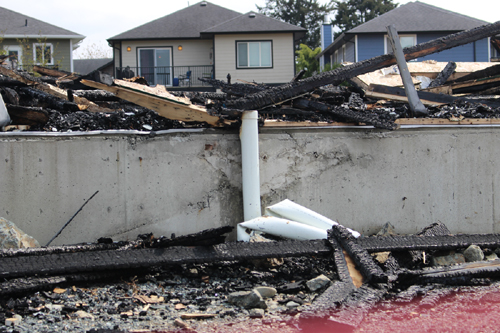
Kitchen scraps initiative nearly 10 years in:
Starting in 2015, Hartland Landfill started accepting kitchen scraps as a separate diversion stream from regular garbage. The program has depended heavily on new investment by garbage haulers and on householder buy-in to participate.
Kitchen scraps separation has become normalized for many households and food processing operators, but has probably leveled off as a new revenue stream for haulers.
Kitchen scraps management requires attention at the household level (including purchase of compostible bags, cleaning of bins and in-kitchen odours) to outdoor attraction of pests.
Comments from operators:
Capital City Recycling (CCR) has residential and commercial customers in the west shore, across Victoria and on the Saanich Peninsula. CCR owner Rick Van says his company will have no choice but to pass along higher fees to their customers starting in 2024. “In today’s society that going to hurt people because it gets passed on to customers,” said Van, but adds: “If CRD feels they need to increase fees to manage their resources” then that’s what will be happening. CCR already pre-sorts materials in three streams: garbage, recycling and kitchen scraps.
GFL Environmental has a large share of the garbage and recycling pickup market in the west shore and Greater Victoria area, including construction site bins. Alpine/GFL says they are “currently evaluating how the changes in CRD tipping fees will impact their pricing to residential and commercial collection customers, and perhaps also customers who rent bins for largely construction material collection”.
Waste Management (WM) is a large US-based company that provides waste collection services to residential (larger strata and municipal contracts) and commercial customers within the Greater Victoria area (including for the Town of View Royal). “Nobody wants to pay more than they have to for garbage and recycling. We are always working to provide services that are safe and reliable at the lowest possible cost. If a rate adjustment is needed, we will notify customers as required,” says Jackie Lang, media rep, Waste Management. They already pre-sort materials:
- Sorting in homes, schools and businesses is the foundation for a successful system. When people put materials in the right containers, it reduces contamination, keeps system costs down and results in more recyclable materials to be made into new products.
- WM collects recyclables and transports them to a local recycling facility for processing. Materials are sorted into basic groups (aluminum, paper, cardboard, plastic bottles, jugs and tubs, etc.) and sent them to manufacturers and other end markets to be made into new products.
- Neither garbage nor food/yard waste is sorted after collection. We transport garbage to the landfill and food/yard waste to local compost processing facilities.
Regarding the lower fees for construction materials going into the landfill, Lang says: “This approach is common and important today because it advances sustainability. It will reduce what goes to the landfill and encourage recycling for construction materials.”
===== ABOUT ISLAND SOCIAL TRENDS:
Island Social Trends is a professional news portal at islandsocialtrends.ca . Fully online as a daily news portal since mid-2020, Island Social Trends emerged from previous print publications in the west shore: MapleLine Magazine (2008-2010), Sooke Voice News (2011-2013), and West Shore Voice News (2014-2020).
Since 2008, journalist and editor Mary P Brooke has taken a socioeconomic lens to reporting and analyzing the news of the west shore and south Vancouver Island region, including BC and national news impacts. [See Island Social Trends Politics Archive]. As of 2023 she reports with the BC Legislative Press Gallery.
Mary P Brooke has also focused on news of School District 62 at the board level since 2014 [see Island Social Trends Education archive]. During 2020 to 2022 she reported daily on the COVID pandemic to build a COVID pandemic archive.


